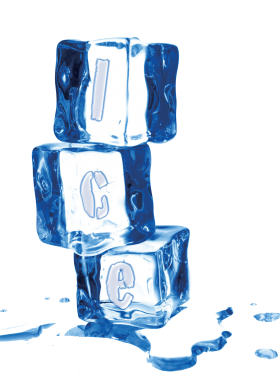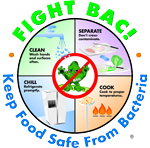FDA Regulates the Safety of Packaged Ice
The average American buys four bags of packaged ice each year, 80 percent of it between Memorial and Labor Day1. The Food and Drug Administration (FDA) regulates packaged ice in interstate commerce as a food, just like other foods.
And like other foods, packaged ice must be produced according to FDA’s regulation for Current Good Manufacturing Practices in Manufacturing, Packing, or Holding Human Food. This means that ice manufacturers must produce, hold, and transport ice in clean and sanitary conditions, monitor the cleanliness and hygiene of employees, use properly cleaned and maintained equipment, and use water that is safe and sanitary.
When FDA investigators inspect packaged ice manufacturing plants, they look at such things as:
- Whether the plumbing in the facility prevents contamination of the ice water supply or stored ice,
- Whether the water supply is safe and sanitary (e.g., water that meets U.S. Environmental Protection Agency standards for drinking water), and
- Whether the manufacturing facility and grounds are maintained in sanitary condition.
Ice Labeling
Packaged ice labels must meet FDA food labeling requirements. The labels must list the name and place of business of the manufacturer, packer, or distributor of the ice. The labels must also list the net quantity of contents of the product. Because ice is a single ingredient food, packaged ice does not need listing of ingredients. In addition, ice does not require a nutrition facts label, unless the package has a nutrient content claim (such as low in sodium). But ice labeled as being from a specific source, such as spring water or artesian well water, must be truthfully labeled and not misleading; in other words, it must really be from that source. The source water must meet all the requirements for such types of source water, as described in FDA regulations.
It can be shaved, cubed, nuggeted, and crushed. It can be made from tap water, from spring water, or from purified water. But no matter the shape or the source, ice is considered a food by FDA.
FDA does not inspect small packaged ice producers, like retail stores, that make and package ice directly for the consumer and only for intrastate sales. FDA also does not inspect food service establishments that make ice for direct use (e.g., for drinks or cooling food). However, retail food stores and food service establishments are subject to regulation by State and local authorities. Also, the FDA Food Code, on which most state and local food regulations are modeled, contains provisions related to the safe and sanitary production and handling of ice.
Tips for Consumers
- Handle ice with clean, non-breakable utensils, such as tongs or an ice scoop.
- Avoid touching ice with dirty hands or glasses.
- Store ice in clean containers that are safe for storing food.
Everyone can practice safe food handling by following these four simple steps:


